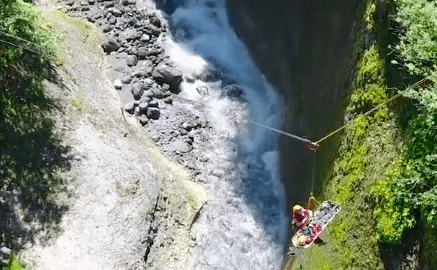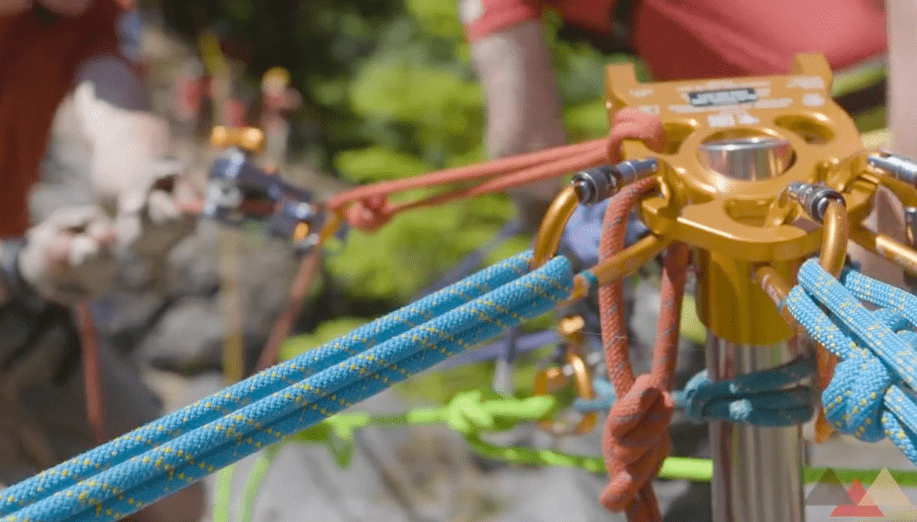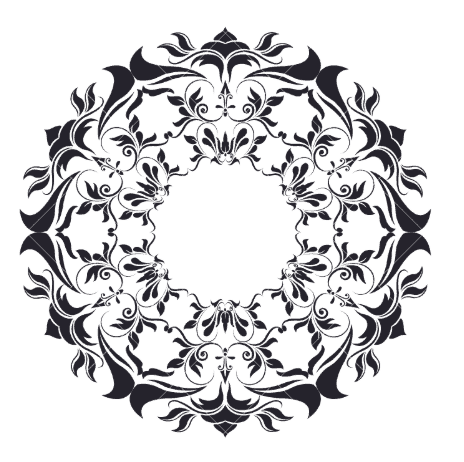 I have heard it said that “a lesson in creativity is like taking a calligraphy class; you never know when something you learn might end up being useful in a place you’d never expect” and for longest time, I didn’t understand what they meant. Until I looked into calligraphy. I mean really… who in the world studies this stuff? The fact of the matter is that many people consider creative design a sub-component of something less than worth doing, but the greater truth is that creative design is the core element of all function and therefore rigging.
I have heard it said that “a lesson in creativity is like taking a calligraphy class; you never know when something you learn might end up being useful in a place you’d never expect” and for longest time, I didn’t understand what they meant. Until I looked into calligraphy. I mean really… who in the world studies this stuff? The fact of the matter is that many people consider creative design a sub-component of something less than worth doing, but the greater truth is that creative design is the core element of all function and therefore rigging.
We can drive a VW Bug or a Tesla X and still be able to discuss design features. One has too consider the time, relevancy and environment from which it came. However, it can be equally understood that for today, there is a reason why a VW Bug is not in the same design class as the Tesla X.
We can look at the merits of Rock Exotica Swivel Pulleys vs Petzl pulleys with swivels, Sterling HTP vs Sterling Nylon vs Petzl Axis, CMC MPD vs the incoming Petzl Maestro, the Rock Exotica AZTEK vs the Petzl Jag System vs the ISC Haulerbiner. And what about the merits of twin tension vs two tension systems vs mainline – slack belay? Small gear systems vs traditional geared systems (and really what is traditional?). Petzl I’d vs Petzl Rig vs Petzl GriGri.
Like calligraphy, creativity is only beneficial if the purpose is achieved. So the question then is…”what are we trying to achieve and why”? The “how” becomes a catalyst in bringing together the  “what” and the “why”. In recent times, Richard Delaney of RopeLab and Rob Stringer of High Point Access and Rescue have both done an amazing job at increasing the levels of performance between the human and product design features of gear and intended technique. However, even in this… they will both agree that this is a moving target. There is no consensus as to where the focal point needs to be. RopeLab aims to promote a better understanding of the fundamental principles underpinning the craft of the rope technician, and Rob is mesmerized with the introspective components of physics applied to high directionals and vector forces.
“what” and the “why”. In recent times, Richard Delaney of RopeLab and Rob Stringer of High Point Access and Rescue have both done an amazing job at increasing the levels of performance between the human and product design features of gear and intended technique. However, even in this… they will both agree that this is a moving target. There is no consensus as to where the focal point needs to be. RopeLab aims to promote a better understanding of the fundamental principles underpinning the craft of the rope technician, and Rob is mesmerized with the introspective components of physics applied to high directionals and vector forces.
Yet even with this amazing brain power at work, precision focus for paradigm shifts are still un-named. What is the major problem fire service needs to solve for? How about Search and Rescue? Can entire systems be carried in one backpack? Many will start throwing rocks at me for this. But are the rocks really being thrown at me or at the “impossible”? What happens if economic down-turn requires a huge cut back on man power and vehicles are no longer as available? Volunteers are no longer as readily available so gear, training and technique needs to be addressed.
Look at the iPhone; We have entire computer systems and media production groups in our pocket and every couple of years, the processing capacity doubles and the cost is cut by 50%. How can this happen? Let’s start with the impossible and you might be surprised at what happens.
So it is here I want to jump into Creativity and what the elusive components and skills of creativity are?
11 Components Of Creativity
- Salience: The ability to pose central problems and to ask important questions.
- Novelty: An interest in and ability to find solutions for problems not tackled before. It is intellectual nonconformity, the ability to distance oneself from the established scientific theories and concepts or artistic forms. This is one of Richard Delaney’s greatest strength. In order to creatively vision out solutions, we need to remove certain barriers of entry.
- Ability to relate old knowledge to new problems: The opposite of novelty, this is the ability to recognize familiar patterns in seemingly new and unique problems.
- Generativity and mental flexibility: The ability to generate multiple and diverse approaches to a problem is essential to the creative process in science.
- Drive and doggedness: In a sense, the opposite of the previous, and ability to deploy sustained effort toward tackling a problem; inspiration vs perspiration.
- Mental Wandering: The mysterious capacity for the productive and seemingly effortless pursuit of ideas wherever they take you.
- Mental focus: The opposite of mental wandering; systemically pursue a logical train of thought.
- Iconoclastic frame of mind: A creative individual must be driven by a sense of dissatisfaction with the intellectual, scientific, or artistic status quo.
- Resonance with central societal and cultural themes: A creative individual (genius included) is ahead of society but the work done must be recognized by the society you are trying to change.
- Social grace: Social suaveness and adaptability or notoriously inept… creative people must survive both of these.
- A favorable cultural milieu: A creative individual deserves a closer examination within the society and epochs they are part of. Be willing to be investigated.
 Teaching “about” ideas and teaching “how” to actually to do it are two completely dissimilar in their nature. Much of the above list is non-conformist in nature and must be fought for and won over… a greater resolve for “status quo”. However those that perceiver through this have a potential energy source not found anywhere else.
Teaching “about” ideas and teaching “how” to actually to do it are two completely dissimilar in their nature. Much of the above list is non-conformist in nature and must be fought for and won over… a greater resolve for “status quo”. However those that perceiver through this have a potential energy source not found anywhere else.
Now in closing this segment of thought, I am in no way saying one person must have all these attributes… The greater gift is found in community where this is divided, aligned and strategically implemented. It is the outcome and objectives that forces the alignment of change and I think a huge problem is that people are attempting to solve (for) problems that are not at the core of the stated goals.
Example… solving for a “catastrophic” failure at the edge. Determining the source of “catastrophe”. Is the rope against an edge with a load on it the problem or is it the person/team who incorrectly determined solvency (at one end) but didn’t account for something else. Visa Versa… determining “high help” is the solution when the precipitating mal-aligned system (at the anchor) was not addressed… either way, this is human error and not rope and so, is greater rope protection for abrasion resistance really needed or is the problem really a lack of functional problem solving and creativity?
We have an amazing community, filled with untapped resources and crazy innovative solutions. I believe these “secrets” are being hidden by environmental stress conditions that is keeping innovation in check. Lets free up some resources for innovation, creativity and critical thinking. We have already established standards… bake that stuff into “tomorrow’s” solutions.
Like calligraphy… you never know when a pattern of design becomes a cornerstone solution for quantum improvements.
How do we cultivate creativity? Be looking for this one soon.
[thrive_leads id=’51590′]
Peace on your Days…
Lance










10 thoughts on “The Creative Mystique: Heroes Are Made When The Function Of Rescue Meets The Higher Expectations Of Designed Rigging”
Greetings! Very helpful advice on this article! It is the little changes that make the biggest changes. Thanks a lot for sharing!
830965 264401Hi! Great post! Please do tell us when I will see a follow up! 46870
Saved as a favorite, I really like your blog!
I love it when people come together and share opinions, great blog, keep it up.
510677 813918Outstanding post, I conceive weblog owners should acquire a lot from this weblog its really user pleasant. 619480
421267 684464The planet are in fact secret by having temperate garden which are typically beautiful, rrncluding a jungle that is certainly certainly profligate featuring so several systems by way of example the game courses, golf method and in addition private pools. Hotel reviews 149887
864962 562025I enjoy your composing design, do carry on creating! I will probably be back! 678621
Türbanlı Orospu Dostu ile Sikişirken Az Daha Yakalanıyordu.
Pornosu 1 yıl önce. 10.89K Gösterim 0 Yorum 0 Beğeni.
Korkusuz bir şekilde evinden çıkarak sert sikicisinin arabasına binip onunla.
952644 956264New York Travel Tips […]below youll discover the link to some websites that we think you need to visit[…] 729860
292185 638793hi!,I like your writing so much! share we communicate far more about your article on AOL? I require an expert on this area to solve my difficulty. Maybe thats you! Searching forward to see you. 61626
Comments are closed.